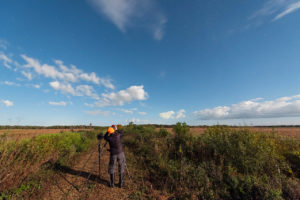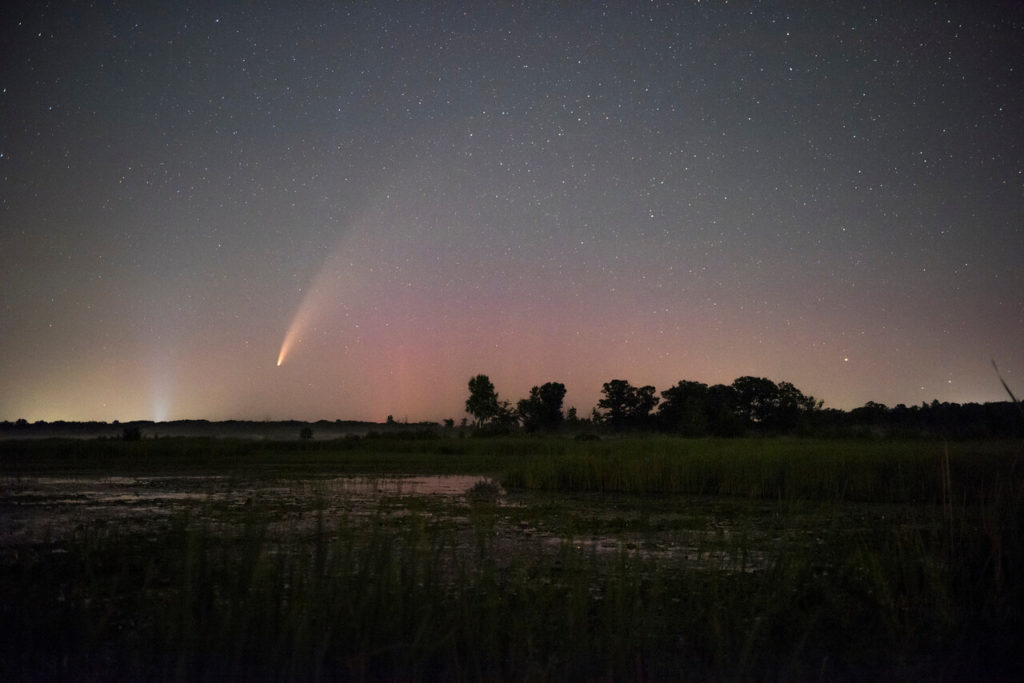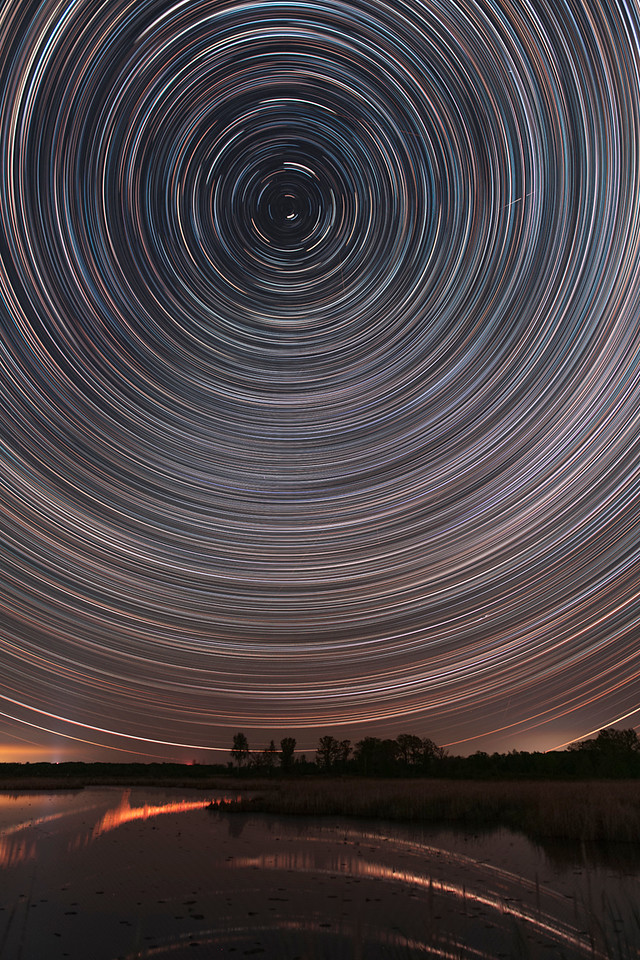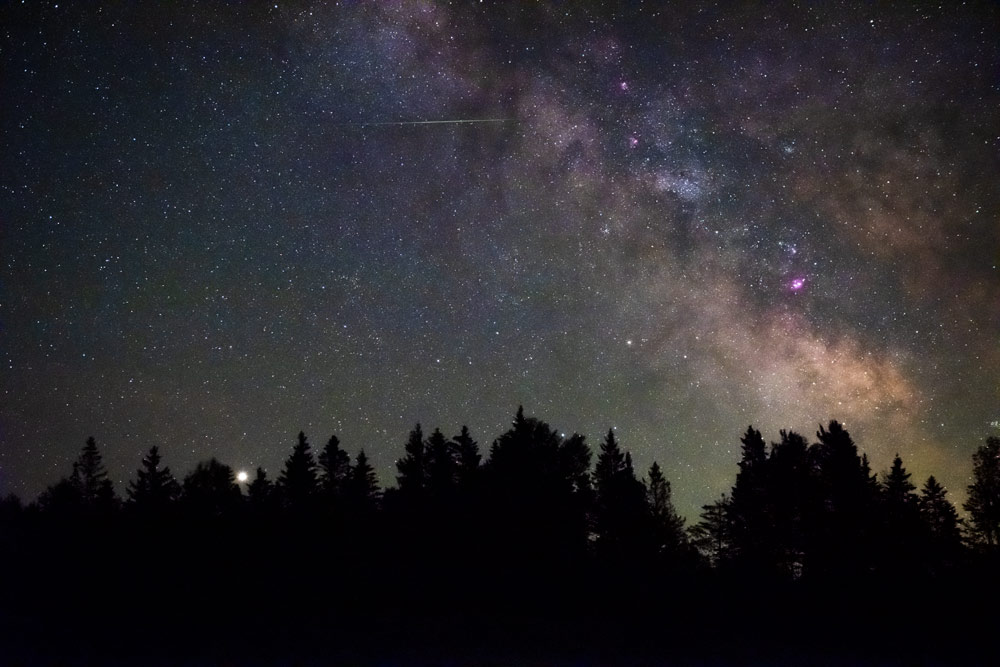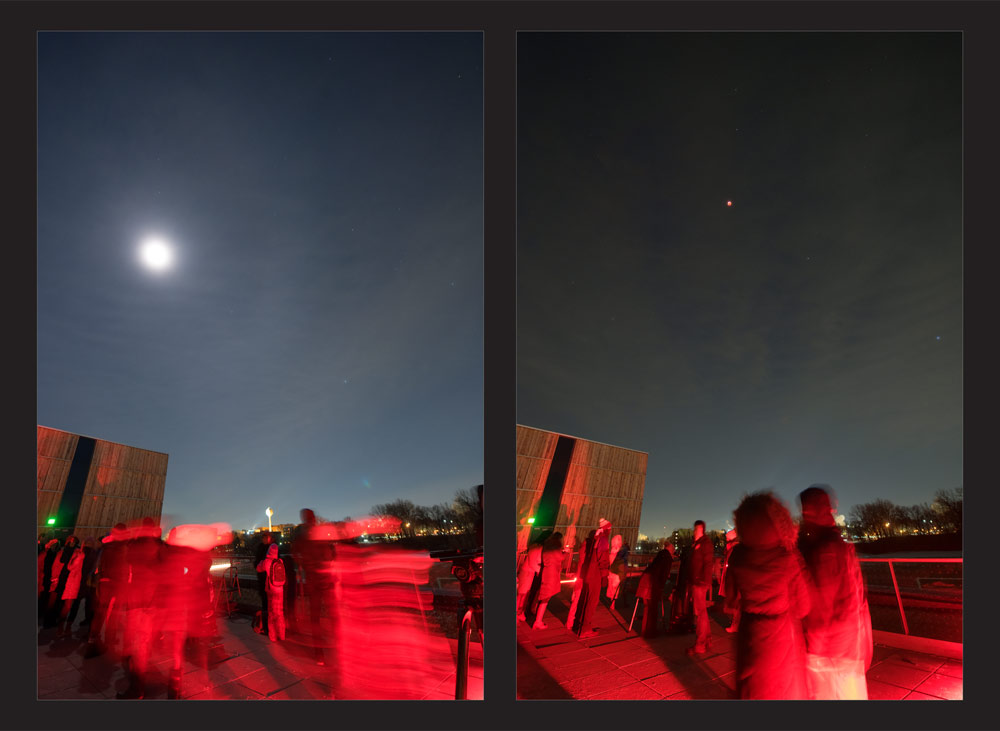
Fifty Nights Under the Stars
Finding Minnesota's Dark Skies with Mike Shaw, resident artist
Minnesota has some of the darkest—and most beautiful—night skies on the planet. But it can be hard to find a naturally dark night sky for observing night sky objects. During a summer 2020 residency, Mike Shaw spent 50 nights under the stars, visiting urban, rural, and wilderness sites across the state to capture these stunning nightscapes. From the glittering Milky Way arching over Split Rock Lighthouse to the rare Comet NEOWISE passing above wetlands near the Twin Cities, these images reveal an important state resource—our dark night skies. Shaw’s project demonstrates how stray light from cities and towns affects what we can see in our night skies, and proposes we can do more to protect Minnesota’s nightscapes for future generations.
To view this exhibition, click on the tabs lower on the page or visit us to see this exhibit in person!
Artist’s Statement
Astrophotographer Mike Shaw prepares his camera for a night of imaging under the stars. Mike Shaw Photography
My goal is to help anyone see what the night sky might look like anywhere in Minnesota. I set out to create a reference set of authentic night sky images and quantitative sky brightness measurements taken with a sky quality meter (SQM).
Over about 50 nights during summer 2020, I visited sites across the state, choosing at least one from each class of the Bortle dark sky scale. I took photographs and measurements on dark nights with clear skies, and focused on three representative regions of the night sky at eight sites as a comparative tool. A summary of my research appears here, along with images from my travels. They show just a few of the many night sky treasures you can experience right here in Minnesota.
—Mike Shaw
About the Artist
Mike Shaw is an award-winning photographer, author, and speaker based in St. Paul. He holds a doctorate in materials engineering from the University of California, Santa Barbara. He is also a delegate to the International Dark Sky Association. His books The Complete Guide to Landscape Astrophotography and Creative Nightscapes are indispensable guides to astrophotography, and his field workshops take him and his students around the globe to find the darkest, clearest skies.
The Resident Artist Research Project is made possible in part thanks to the generous support provided by the McKnight Foundation.
Measuring the Darkness
Sky brightness can be rated using a numerical scale created by amateur astronomer John E. Bortle in 2001. Astronomers and astrophotographers use the Bortle dark sky scale to quantify how dark or bright the sky is at an observing site and to allow comparison across sites.
Minnesota is home to the complete range of Bortle classes. The darkest sites, Bortle class 1, can be found in the Boundary Waters Canoe Area Wilderness, while the brightest locations, Bortle class 9, are in downtown Minneapolis and St. Paul.
Reducing Skyglow
Stray light from cities and towns affects what we can see in our skies at night. The uncontrolled spread of scattered light upward from streetlights, buildings, and vehicles is a form of light pollution called skyglow. Skyglow can make viewing dim night sky objects difficult, or even impossible.
You can help reduce skyglow with a few simple actions!
- Use light fixtures that direct outdoor light downward rather than upward.
- Turn off outdoor lights when not in use. Timers and motion sensors can help.
- Use energy efficient bulbs that are only as bright as you need them to be.
- Choose warm white bulbs with color temperatures of 3000K or below.
- Check out the International Dark Sky Association at darksky.org for more resources.
What's Your Number?
The Bortle scale is a system for estimating the brightness of a night sky. A low Bortle class number, like 1, means the sky is extremely dark and most night sky objects are clearly visible. A high Bortle class number, like 9, means the sky is bright. Bright night skies mean that dim stars, planets, and nebulae may be hard to see.

1) Find your location on the map. What is the corresponding color?
2) Look at the scale to the left. Find your color and its matching number. That’s the Bortle class number for your location. Is it low or high? Are your skies dark, bright, or in between?
3) Find your Bortle class number on the images on other panels to see how the night sky might look in your location when it is clear and there’s no moon out or snow on the ground. Does what you see look familiar?
4) Think about sites across Minnesota. How far would you need to go to find a darker location (one with a lower Bortle class number)?
Project Field Locations
For this project, images were taken from sites across the state, capturing everything from dark skies to relatively bright ones. These locations, along with their Bortle class numbers and Sky Quality Meter (SQM) measurements, are listed here.
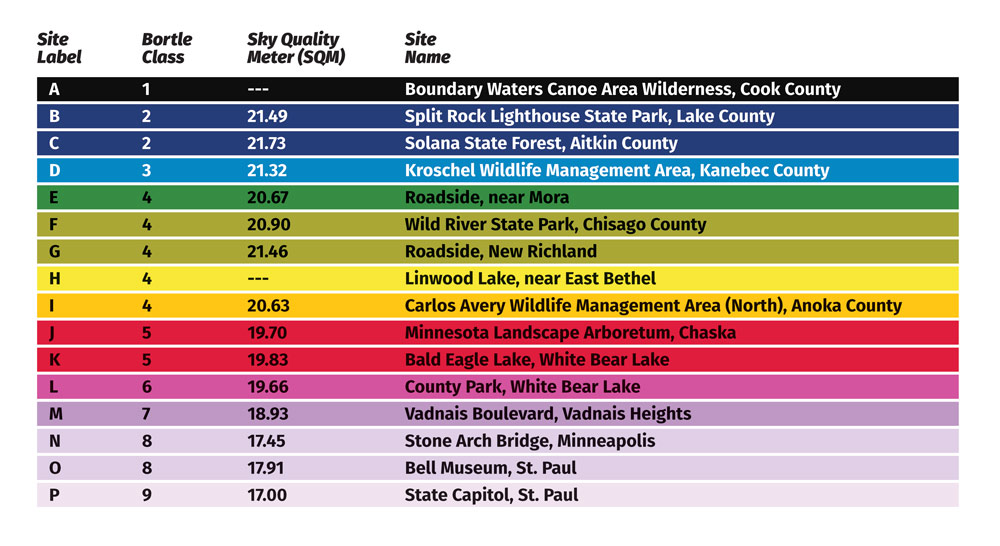
The Milky Way
The Milky Way is a popular object for night sky observing. These images of the Milky Way come from different sites, some with dark skies and some with relatively bright skies, as indicated by their sky brightness measurements and Bortle class numbers. The images are aligned to show the same region of the sky. The arrows point to Jupiter (left) and Arcturus (right).
What Does Your Night Sky Look Like?
Use these images to see how visible the Milky Way is where you live, or at any other location with the same Bortle class number. Find a site, match its color on the map to its Bortle class number, and match that to an image number. The image shows how visible the Milky Way is at any site with that Bortle class number.

The Summer Triangle
The Summer Triangle (outlined) is a group of stars, called an asterism that sits in a densely populated region of the Milky Way. It is made up of the stars Vega, Altair, and Deneb, each the brightest star of its constellation (Lyra, Aquila, and Cygnus, respectively).
It is especially visible in the summer months, when many night sky observers enjoy watching its path across the sky. During his project, Mike Shaw photographed it at sites across Minnesota as a way to compare sky brightness in different locations.
What Does Your Night Sky Look Like?
You can see how the Summer Triangle might look where you live, or at any location in Minnesota. Find a site, match its color on the map to its Bortle class number, and match that to an image number. The Summer Triangle looks similar in any site with the same Bortle class number.
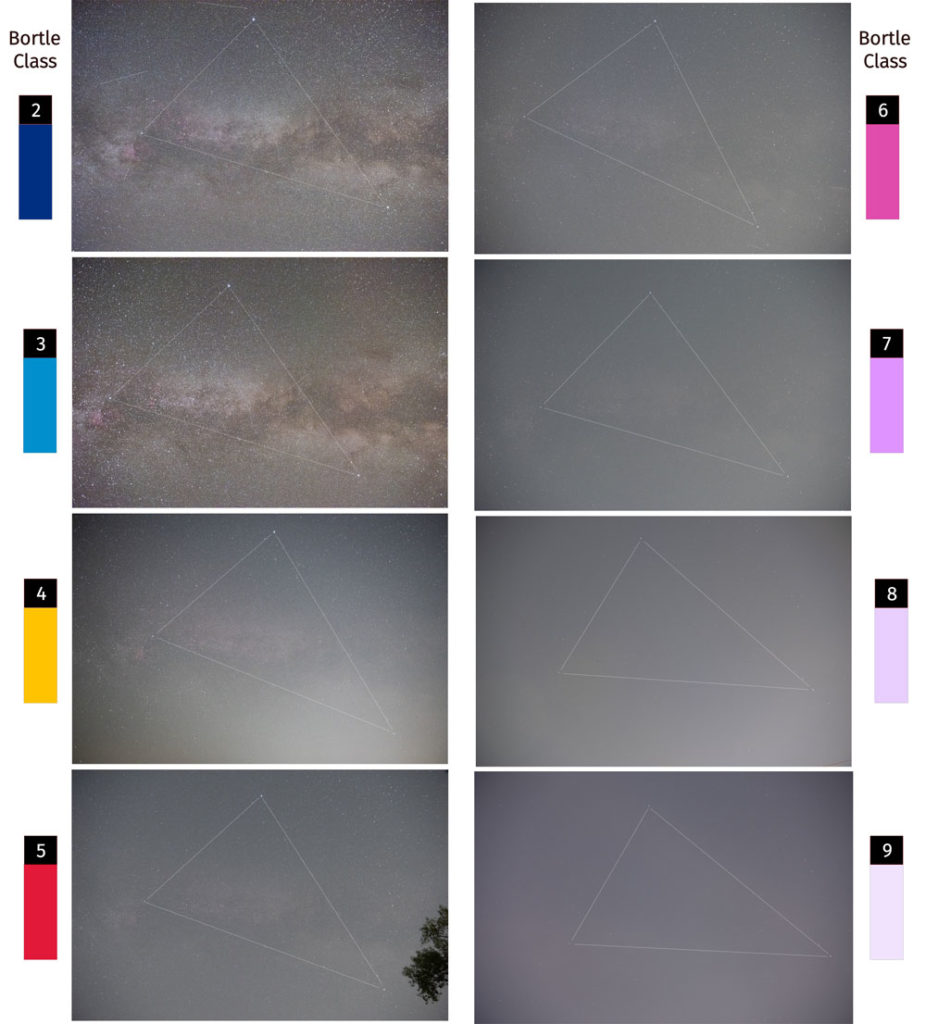
Split Rock Milky Way
 The Milky Way’s bright central band arches over Split Rock Lighthouse (bottom) in this all-sky image. Split Rock Lighthouse State Park is an excellent place for night sky observing thanks to its dark skies and unobstructed views of the horizon.
The Milky Way’s bright central band arches over Split Rock Lighthouse (bottom) in this all-sky image. Split Rock Lighthouse State Park is an excellent place for night sky observing thanks to its dark skies and unobstructed views of the horizon.
8 mm circular fisheye, f/4.0, ISO 6400, 60 sec.


